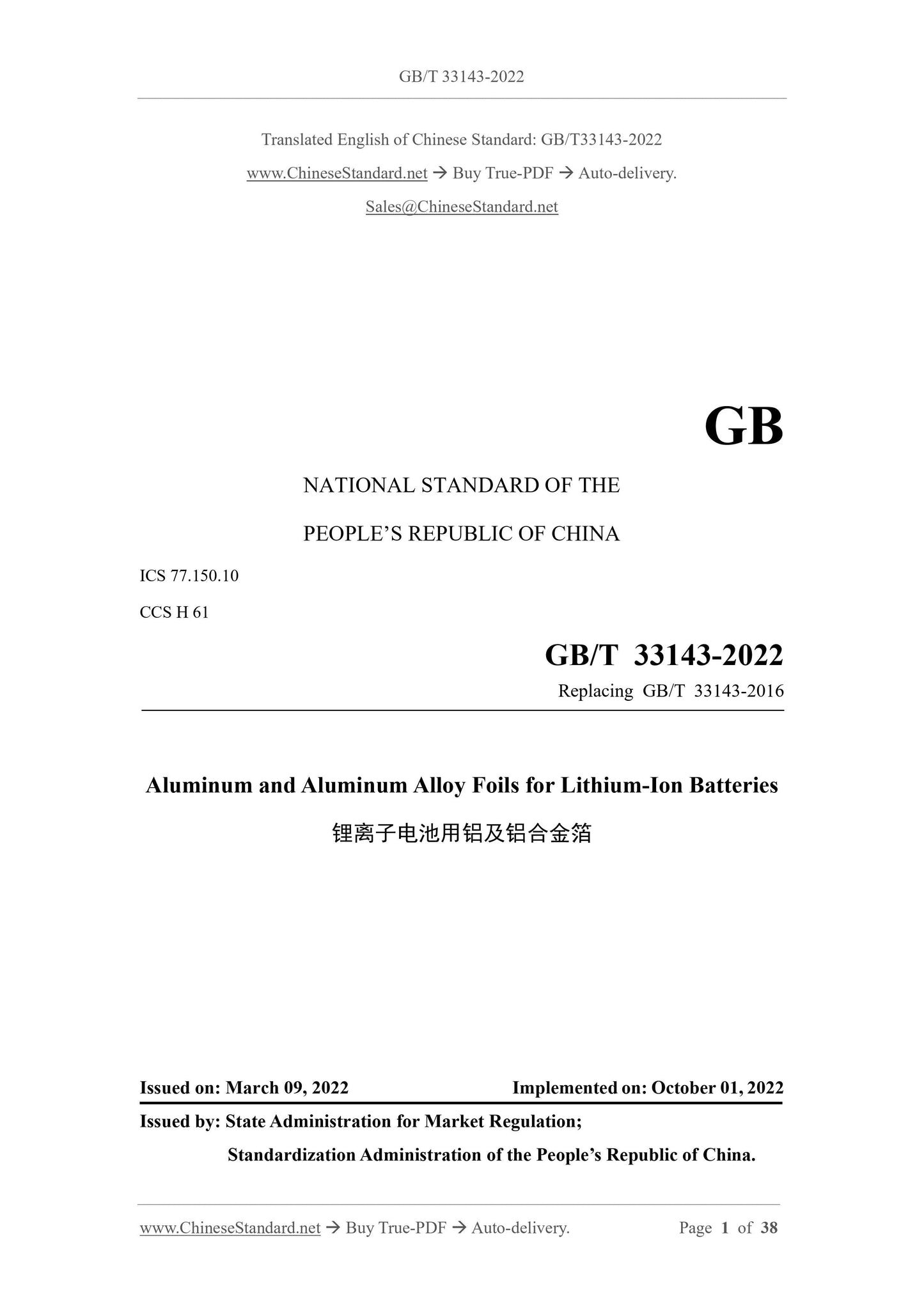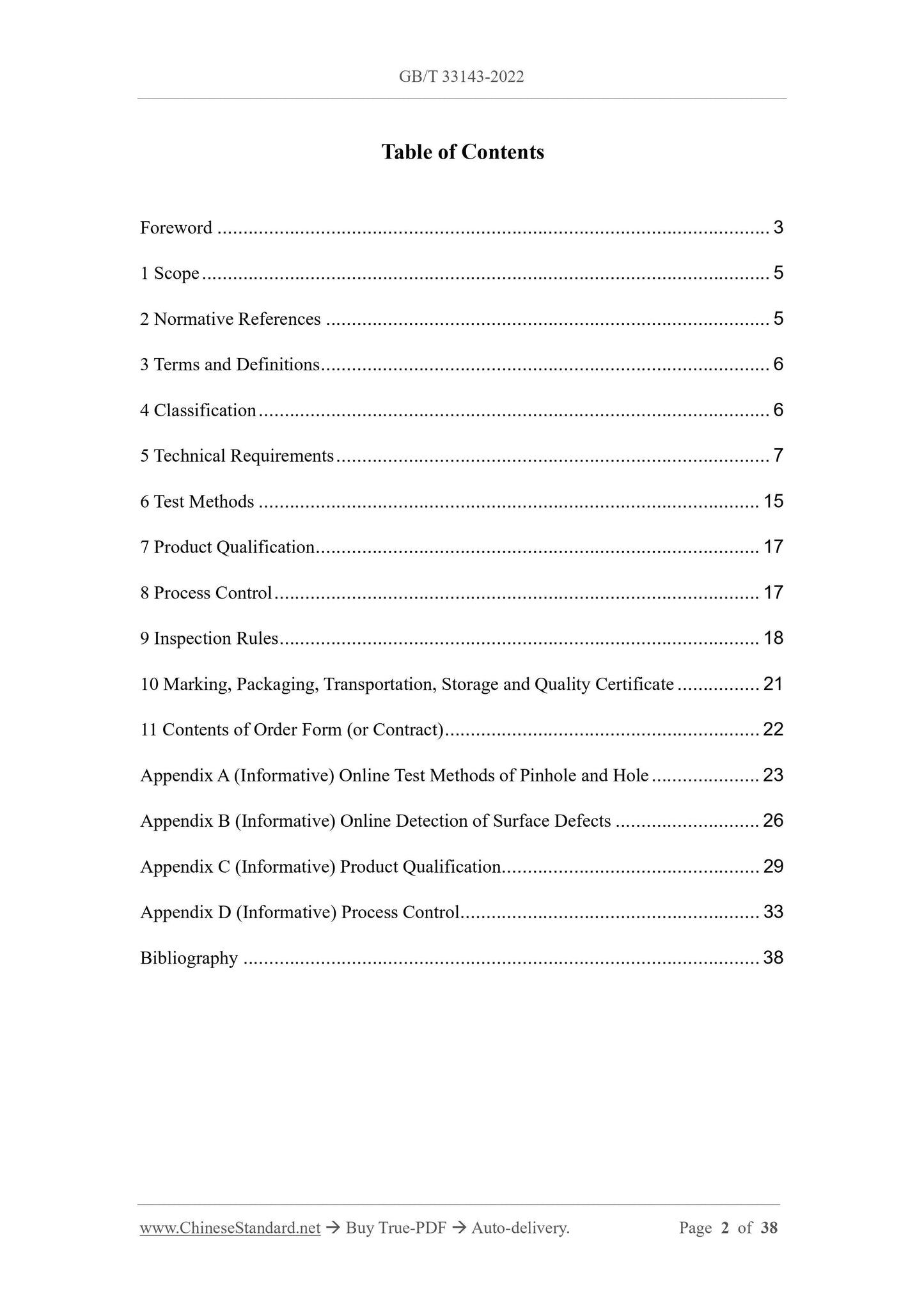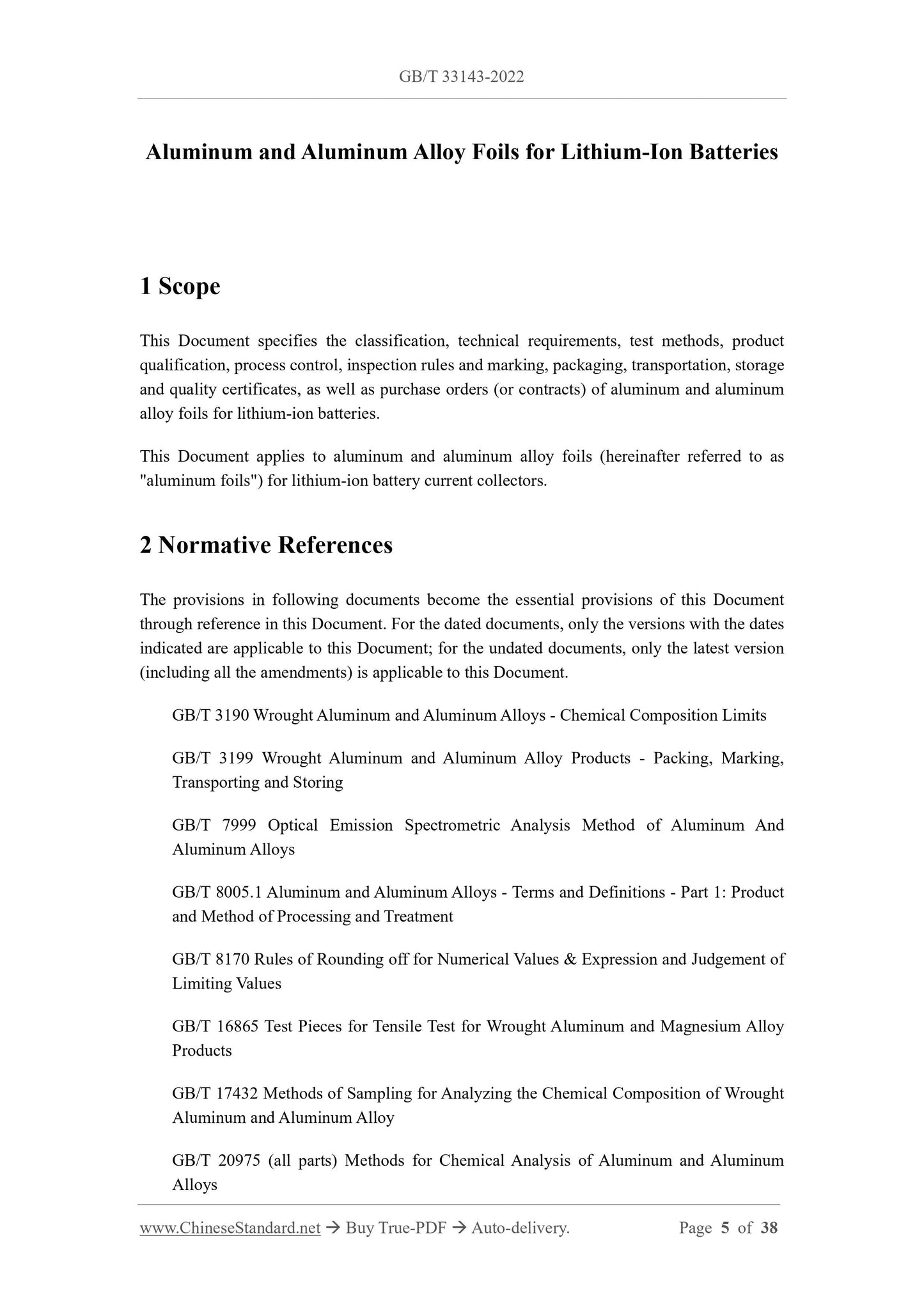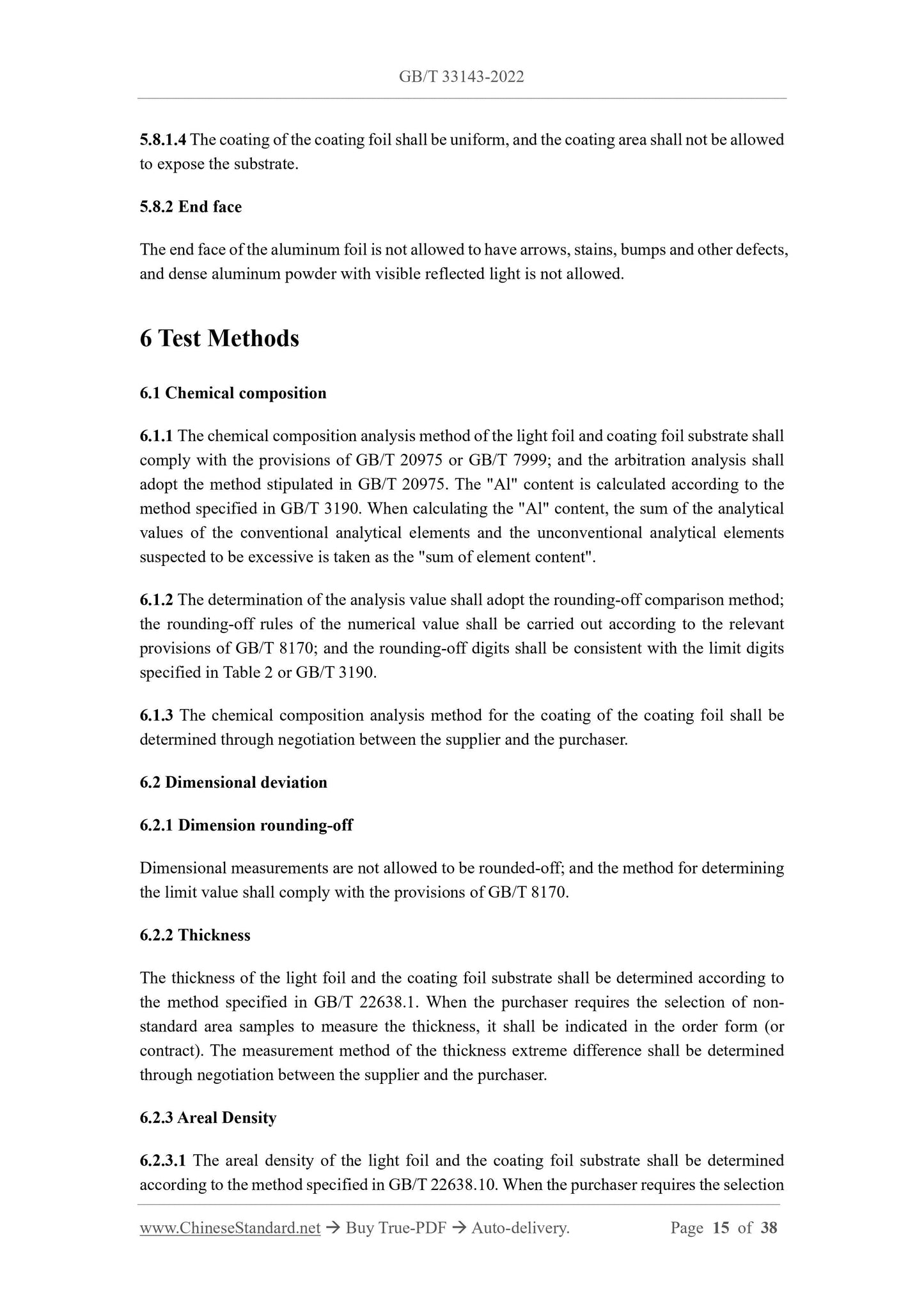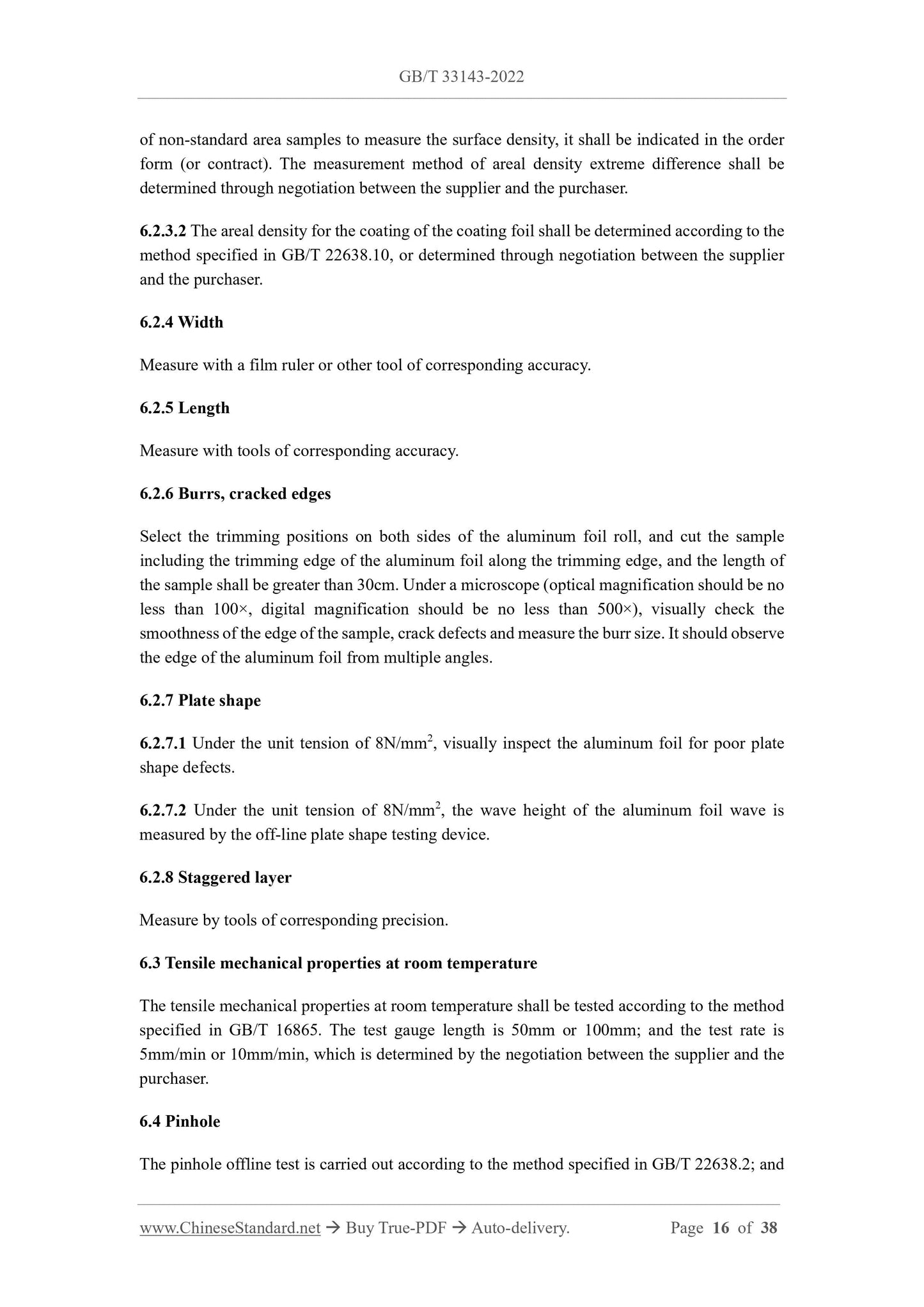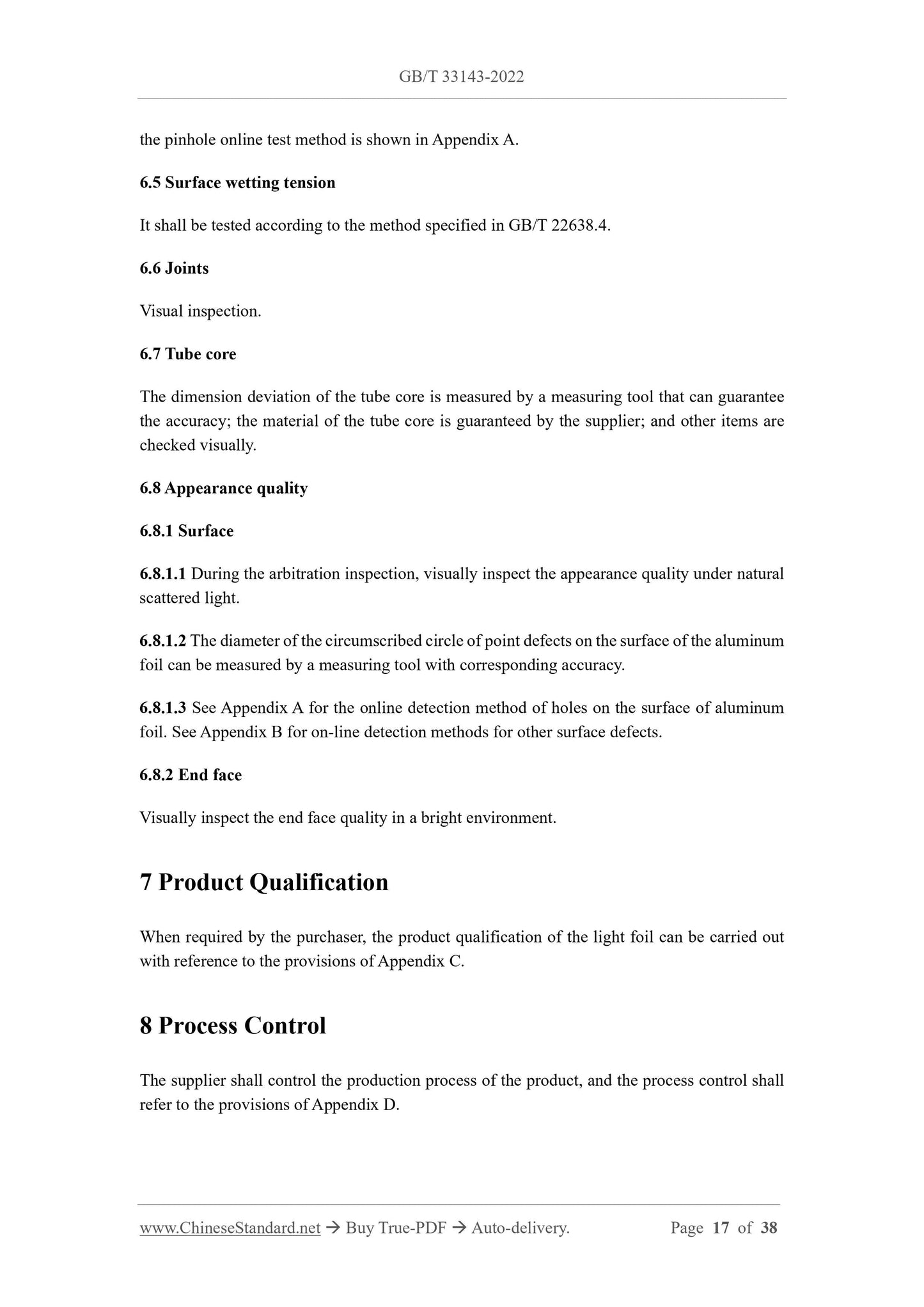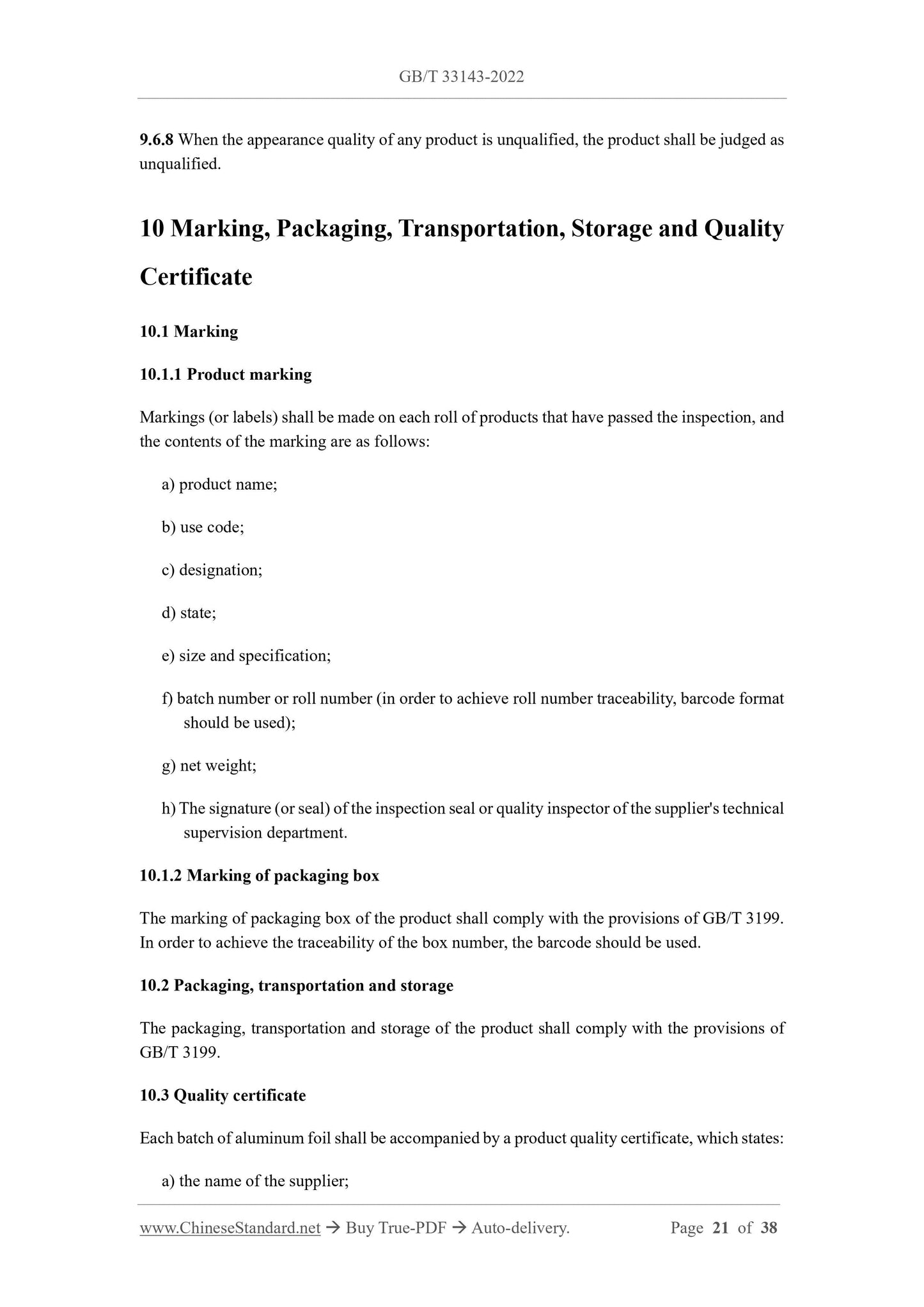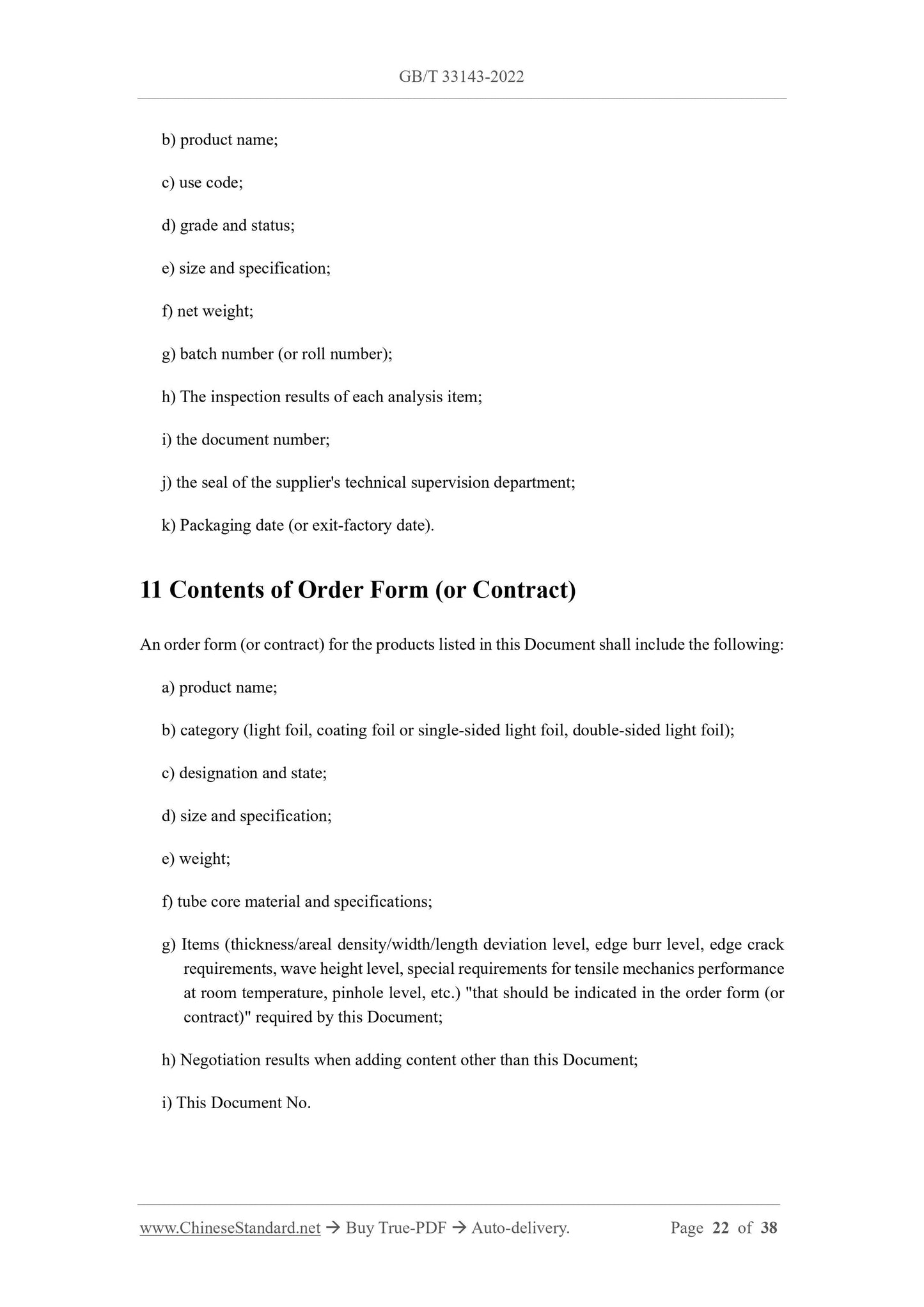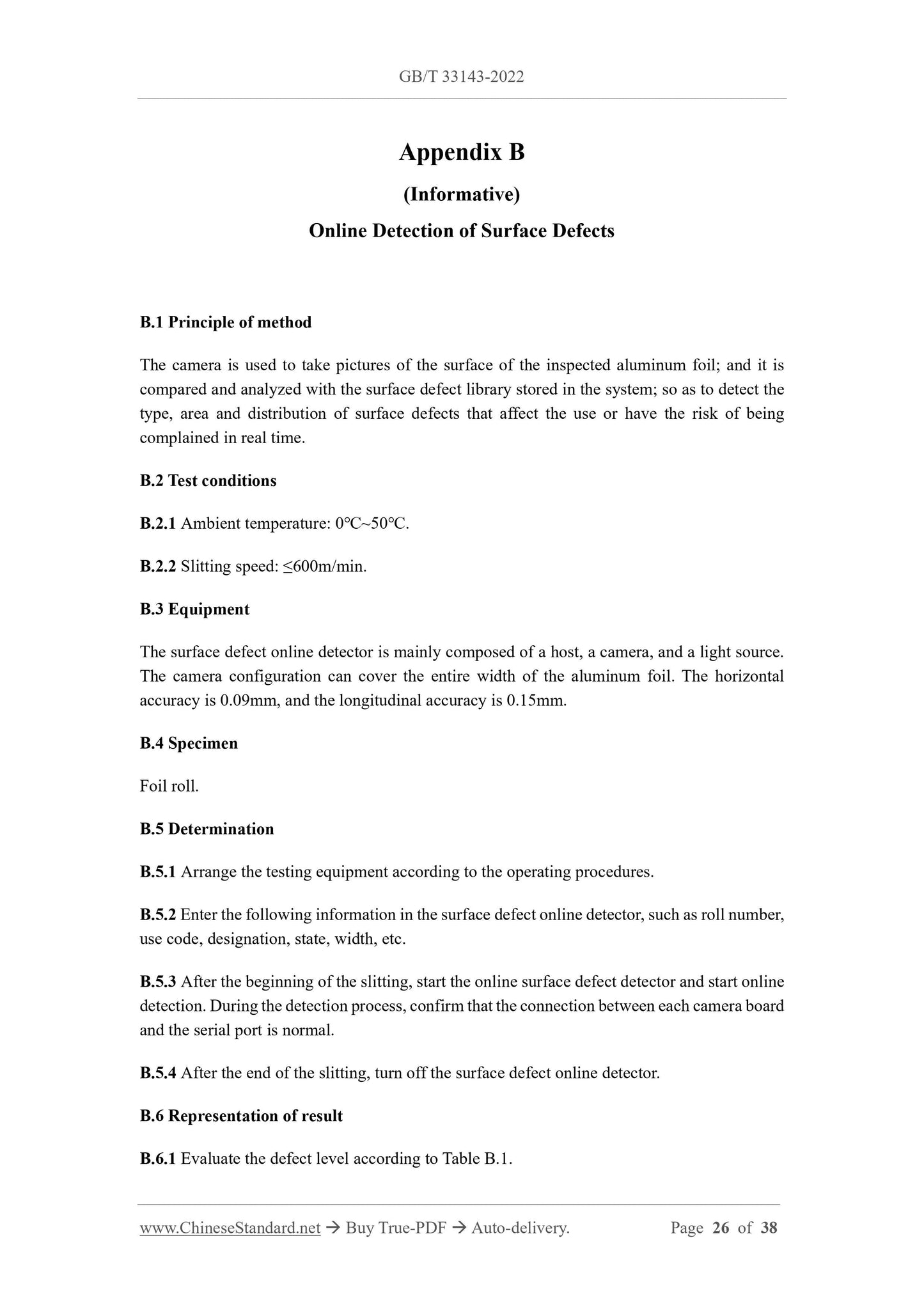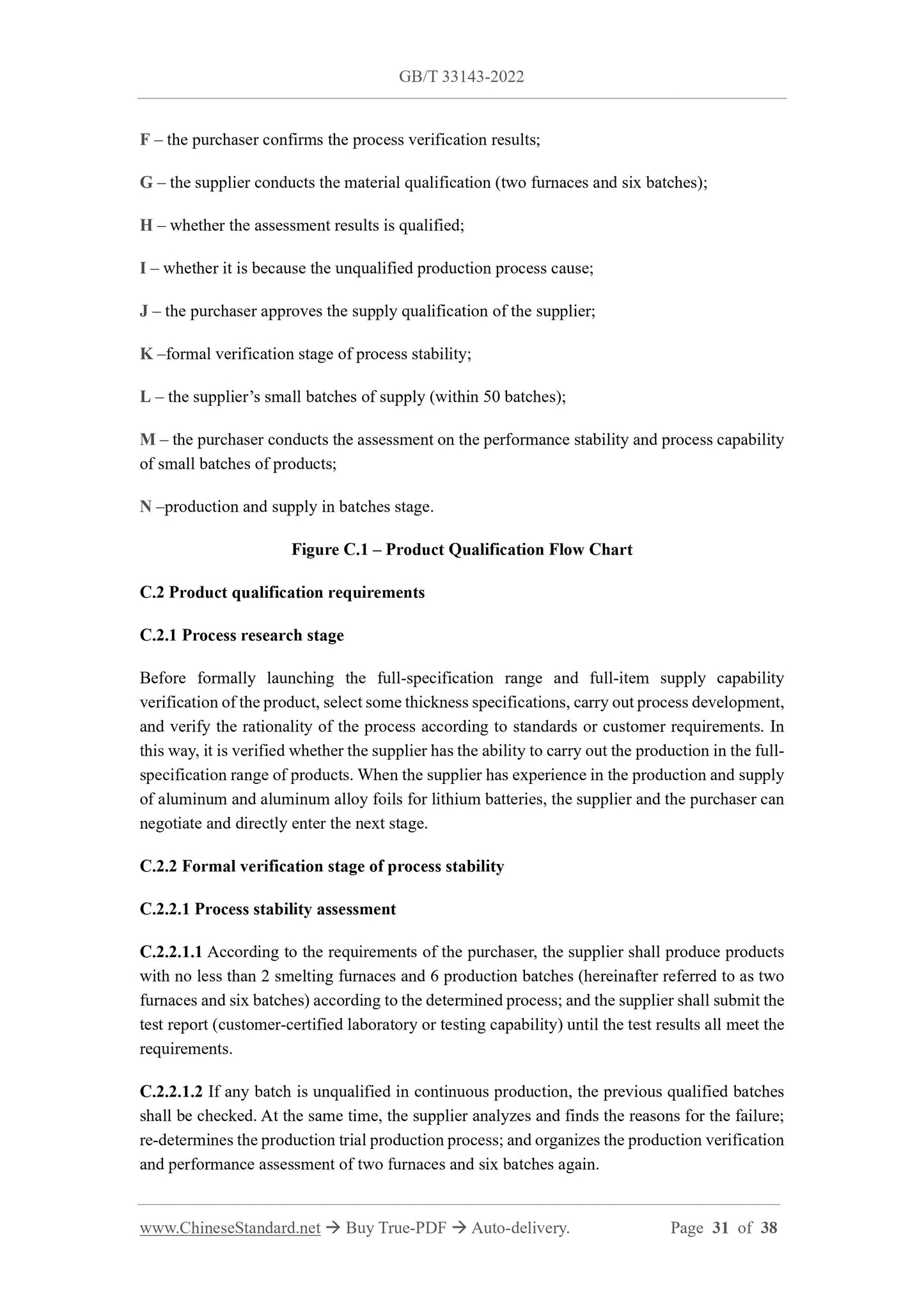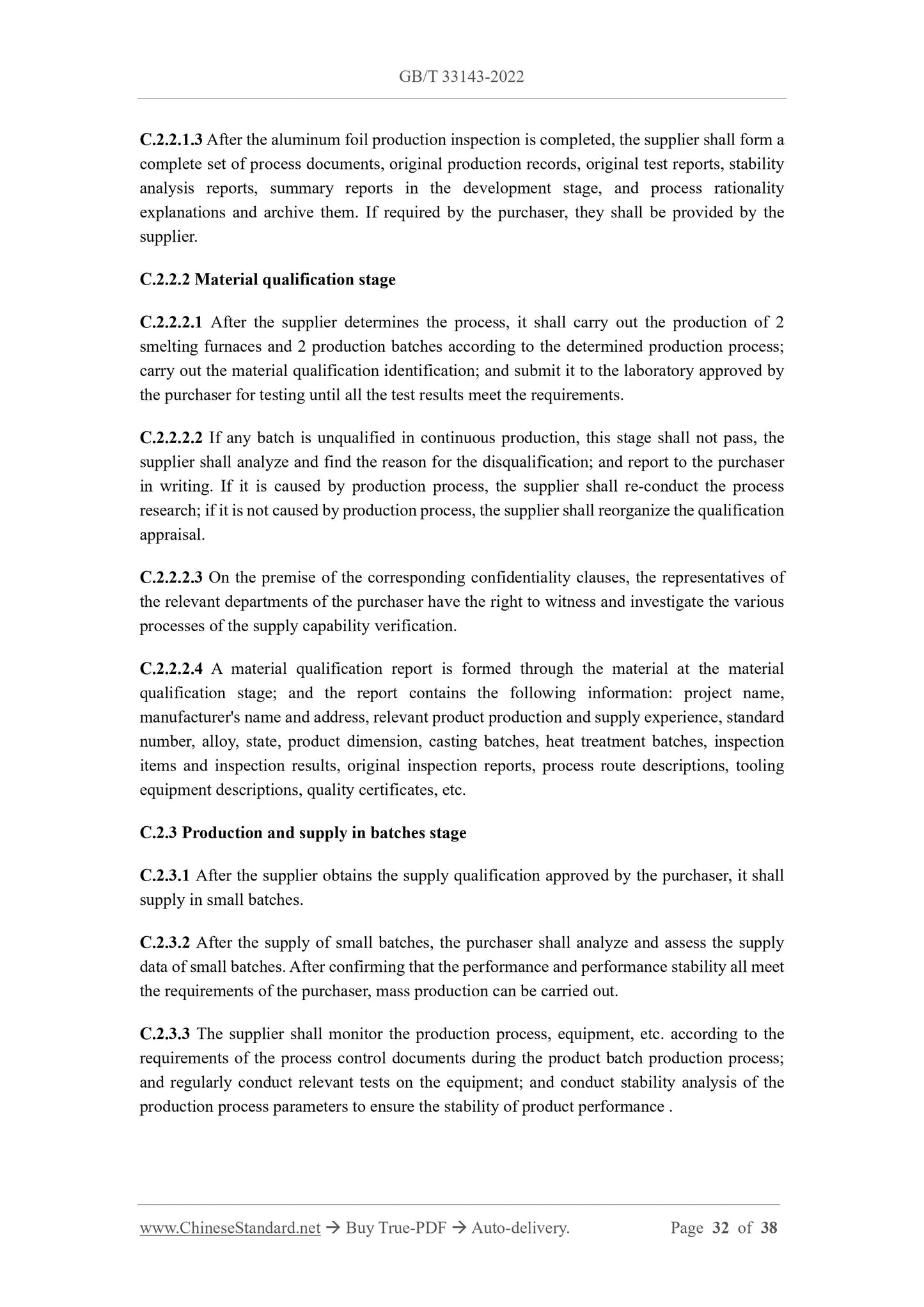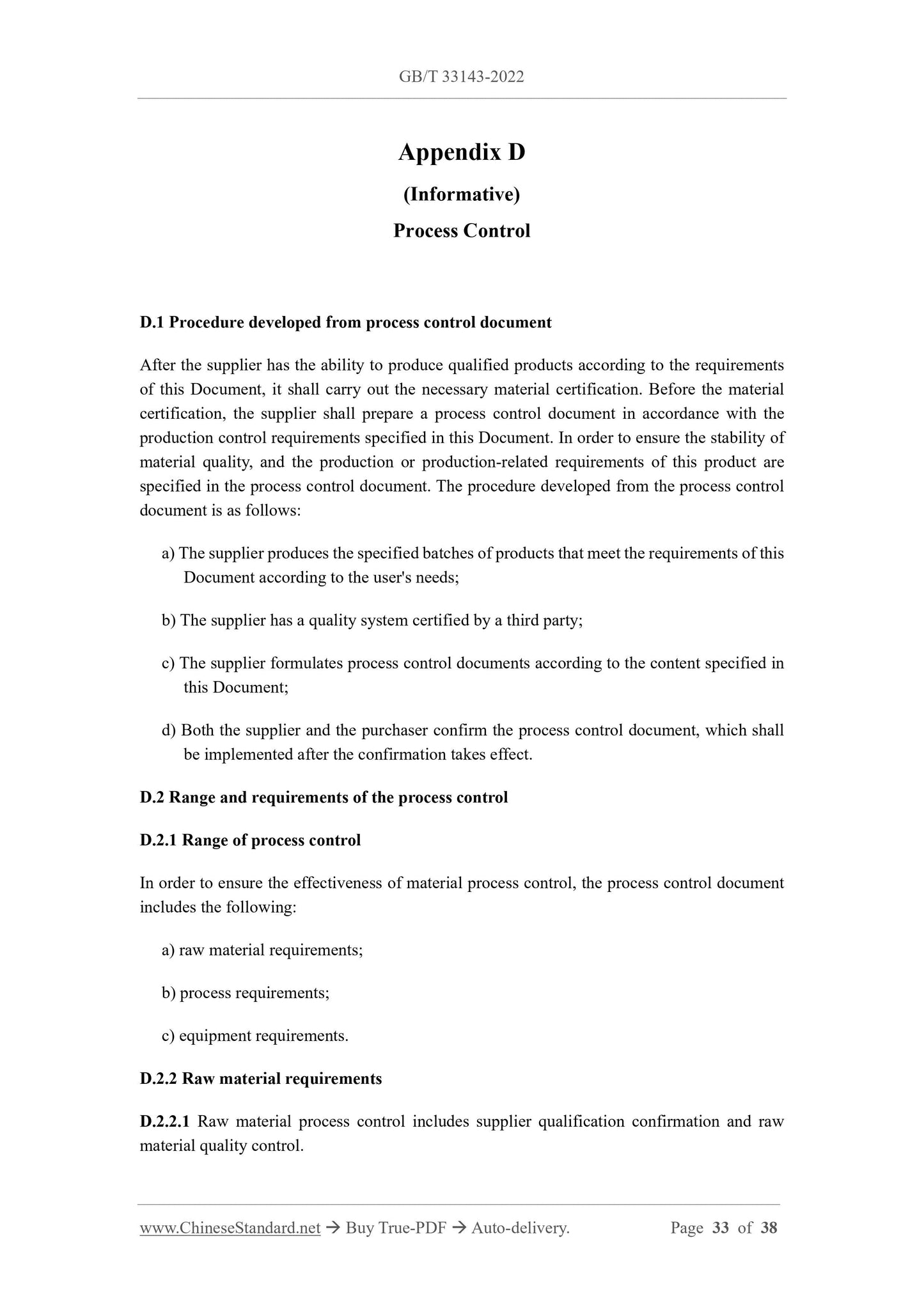1
/
of
12
www.ChineseStandard.us -- Field Test Asia Pte. Ltd.
GB/T 33143-2022 English PDF (GB/T33143-2022)
GB/T 33143-2022 English PDF (GB/T33143-2022)
Regular price
$350.00
Regular price
Sale price
$350.00
Unit price
/
per
Shipping calculated at checkout.
Couldn't load pickup availability
GB/T 33143-2022: Aluminium and aluminium alloy foils for lithium ion batteries
Delivery: 9 seconds. Download (and Email) true-PDF + Invoice.Get Quotation: Click GB/T 33143-2022 (Self-service in 1-minute)
Newer / historical versions: GB/T 33143-2022
Preview True-PDF
Scope
This Document specifies the classification, technical requirements, test methods, productqualification, process control, inspection rules and marking, packaging, transportation, storage
and quality certificates, as well as purchase orders (or contracts) of aluminum and aluminum
alloy foils for lithium-ion batteries.
This Document applies to aluminum and aluminum alloy foils (hereinafter referred to as
"aluminum foils") for lithium-ion battery current collectors.
Basic Data
| Standard ID | GB/T 33143-2022 (GB/T33143-2022) |
| Description (Translated English) | Aluminium and aluminium alloy foils for lithium ion batteries |
| Sector / Industry | National Standard (Recommended) |
| Classification of Chinese Standard | H61 |
| Word Count Estimation | 26,284 |
| Issuing agency(ies) | State Administration for Market Regulation, China National Standardization Administration |
Share
